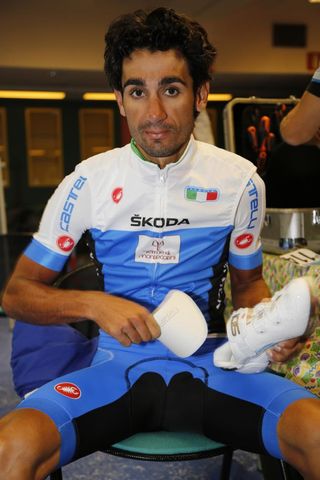Giampaolo Caruso handed two-year ban for 2012 EPO positive test
Sicilian provisionally suspended since August 2015

The UCI has announced that Giampaolo Caruso has been handed a two-year ban by its Anti-Doping Tribunal for testing positive for EPO in an out-of-competition control in March 2012.
Caruso's positive test only came to light in August 2015 following the reanalysis of a sample taken on 27 March 2012. More than five years on from the date of the test, the UCI finally announced Caruso's sanction.
The two-year ban is backdated to 18 August 2015, the date of the retesting of his sample, meaning that the 37-year-old Caruso can return to competition in a little over two months' time.
Caruso was provisionally suspended in August 2015 pending the analysis of the B-sample. He has not raced since he placed 90th overall in that year's Tour de France. The Sicilian raced with Katusha between 2010 and 2015.
According to the UCI's website, Caruso's results from March 27 to December 31 of 2012 have been expunged. His subsequent results, including his Milan-Turin victory of 2014 and his 4th place finish in that year's Liège-Bastogne-Liège, have not been revoked.
Caruso, a native of Avola in Sicily, turned professional with ONCE in 2002 and returned a positive test for nandrolone at the Tour Down Under during his second season as a professional, serving a 6-month ban in 2003.
Caruso continued with the team when Liberty Seguros took over from ONCE as sponsor, and had spells at Lampre and Ceramica Flaminia before joining Katusha in a mid-season transfer ahead of the 2010 Giro d'Italia.
Get The Leadout Newsletter
The latest race content, interviews, features, reviews and expert buying guides, direct to your inbox!
In a statement on its website on Friday, the UCI explained samples from major race winners and leaders are stored "for up to ten years" for potential retesting as a matter of courses, along with "other samples, based on risk assessment carried out by the CADF, laboratory recommendations, Athlete Biological Passport data, new detection methods and scientific developments."
Most Popular

